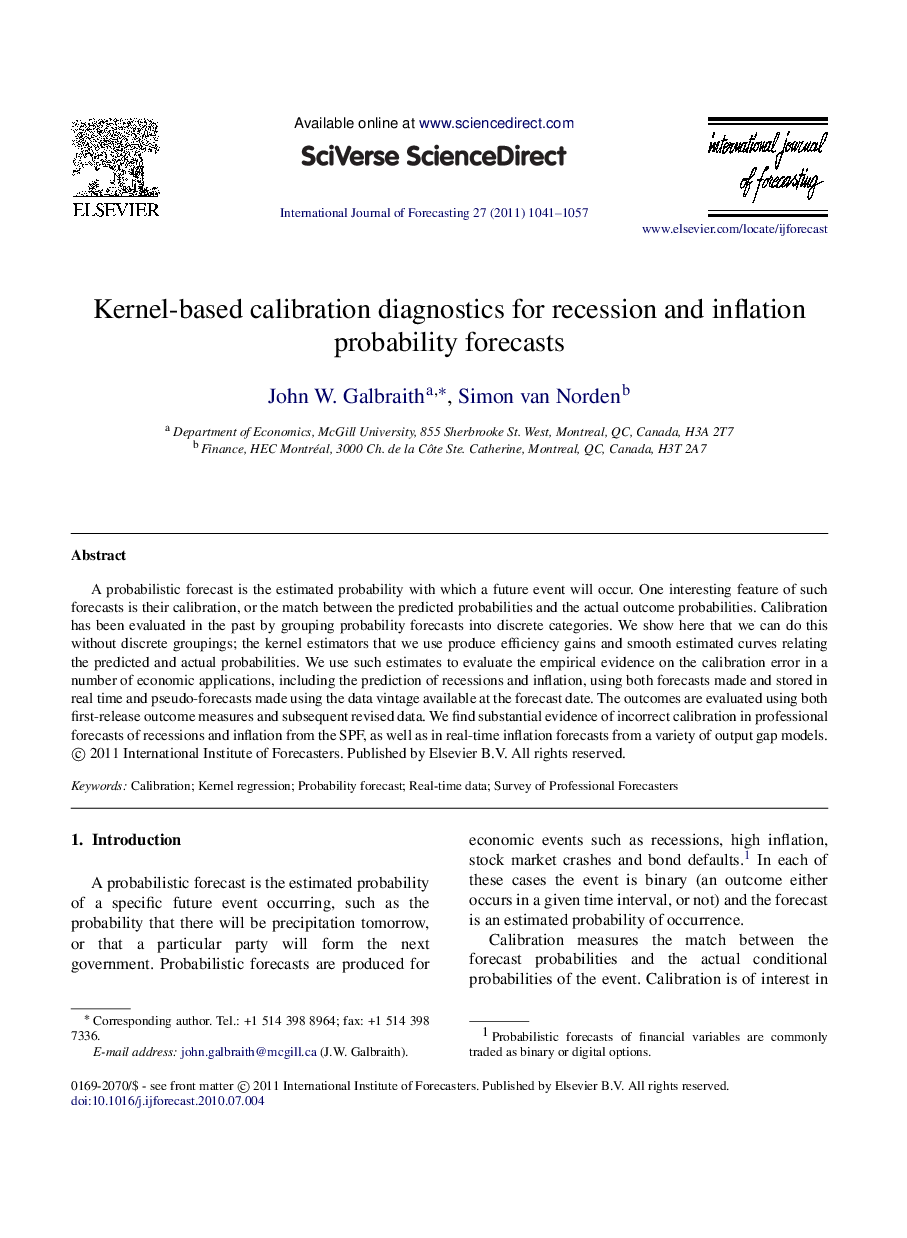| Article ID | Journal | Published Year | Pages | File Type |
|---|---|---|---|---|
| 998282 | International Journal of Forecasting | 2011 | 17 Pages |
A probabilistic forecast is the estimated probability with which a future event will occur. One interesting feature of such forecasts is their calibration, or the match between the predicted probabilities and the actual outcome probabilities. Calibration has been evaluated in the past by grouping probability forecasts into discrete categories. We show here that we can do this without discrete groupings; the kernel estimators that we use produce efficiency gains and smooth estimated curves relating the predicted and actual probabilities. We use such estimates to evaluate the empirical evidence on the calibration error in a number of economic applications, including the prediction of recessions and inflation, using both forecasts made and stored in real time and pseudo-forecasts made using the data vintage available at the forecast date. The outcomes are evaluated using both first-release outcome measures and subsequent revised data. We find substantial evidence of incorrect calibration in professional forecasts of recessions and inflation from the SPF, as well as in real-time inflation forecasts from a variety of output gap models.
